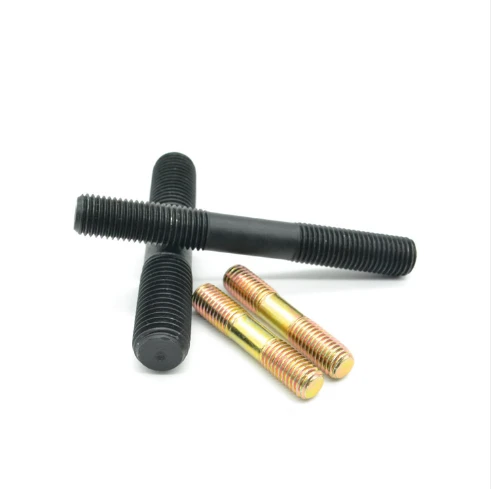Square Plastic Washer Manufacturing Process and Applications in Various Industries
ធ្នូ . 15, 2024 00:50 Back to list
Square Plastic Washer Manufacturing Process and Applications in Various Industries
The Rise of Square Plastic Washers A Look into the Factory Manufacturing Process
In recent years, the demand for plastic components in various industries has surged, leading to a significant increase in the production of plastic washers, especially square plastic washers. These components serve a crucial role in numerous applications, providing essential support and stability in assemblies. This article will explore the manufacturing process of square plastic washers in factories and the benefits they offer.
Understanding Square Plastic Washers
Square plastic washers are flat, square-shaped pieces designed to distribute the load of a fastener, such as a bolt or screw, over a larger area. Unlike their round counterparts, square washers have distinct geometric advantages, including improved centering, increased surface area, and better grip on uneven surfaces. They are predominantly made from durable plastic materials like nylon, polypropylene, or polyethylene, making them resistant to corrosion and environmental factors that often degrade metal components.
The Manufacturing Process
The production of square plastic washers typically involves several key steps, including design, material selection, molding, finishing, and quality control.
1. Design and Prototyping The first step in the manufacturing process is designing the square plastic washer. Engineers utilize computer-aided design (CAD) software to create precise specifications. This step often includes creating prototypes which help in visualizing the product and making necessary modifications before mass production begins.
2. Material Selection Choosing the right material is crucial for the performance and durability of the washers. Nylon is favored for its tensile strength and flexibility, while polypropylene is chosen for its chemical resistance and lightweight properties. The selected plastic resin is sourced from reliable suppliers to ensure consistent quality.
3. Molding Process The most common method for manufacturing square plastic washers is injection molding. In this process, the plastic resin is heated until it becomes molten and then injected into a mold designed in the shape of the washer. Once cooled, the mold is opened, and the washers are removed. This method allows for high-volume production and precision, ensuring each washer meets the specified dimensions.
square plastic washers factory

4. Finishing Touches After molding, the washers often undergo finishing processes to enhance their performance. This can include trimming excess material, surface polishing, or applying coatings for additional protection against wear and tear. These finishing touches are vital for ensuring that the washers perform optimally in their intended applications.
5. Quality Control To maintain high standards, manufacturers implement rigorous quality control measures. Each batch of washers is subjected to tests that check for dimensional accuracy, strength, and resilience. Advanced testing techniques, such as tensile tests and environmental testing, ensure that the washers can withstand the conditions they will face in real-world applications.
Applications of Square Plastic Washers
Square plastic washers find applications in a variety of industries, including automotive, construction, electronics, and consumer goods. In the automotive sector, they are used to prevent rattling and provide a cushion for bolts in assembly. In electronics, they help stabilize components and protect delicate surfaces. The construction industry utilizes these washers for securing panels and roofing materials.
The Future of Square Plastic Washers
As industries continue to evolve, the demand for more efficient and durable components will rise. Innovations in materials and manufacturing processes are expected to enhance the performance of square plastic washers, making them an even more valuable component in various applications. Additionally, the increased focus on sustainability is driving manufacturers to explore bio-based plastics and recycling initiatives, further reducing the environmental impact of plastic components.
Conclusion
The manufacturing landscape for square plastic washers reflects the broader trends in the industry toward precision, efficiency, and sustainability. As factories adopt advanced technologies and materials, the production of these essential components will continue to thrive, meeting the evolving needs of diverse sectors and contributing to the development of innovative solutions. With their unique advantages and versatile applications, square plastic washers are poised to remain a staple in modern manufacturing.
Latest news
-
High-Quality Panel Stud Bolt Reliable Panel Stud Bolt Factory & Suppliers
NewsJul.08,2025
-
High-Precision Fine Thread Locknuts Manufacturer & Supplier Custom Solutions
NewsJul.08,2025
-
PH Imperial Stud Bolt – High Strength Fasteners from Leading Supplier & Factory
NewsJul.07,2025
-
High-Quality Allen Wrench Bolts Leading Factory, Company & Suppliers
NewsJul.07,2025
-
Wholesale Ball Stud Bolt - High Quality Supplier & Factory Price Reliable Wholesale Ball Stud Bolt Company
NewsJul.06,2025
-
High-Strength Alloy Bolts Manufacturer & Supplier Quality Alloy Fasteners Factory
NewsJul.06,2025
